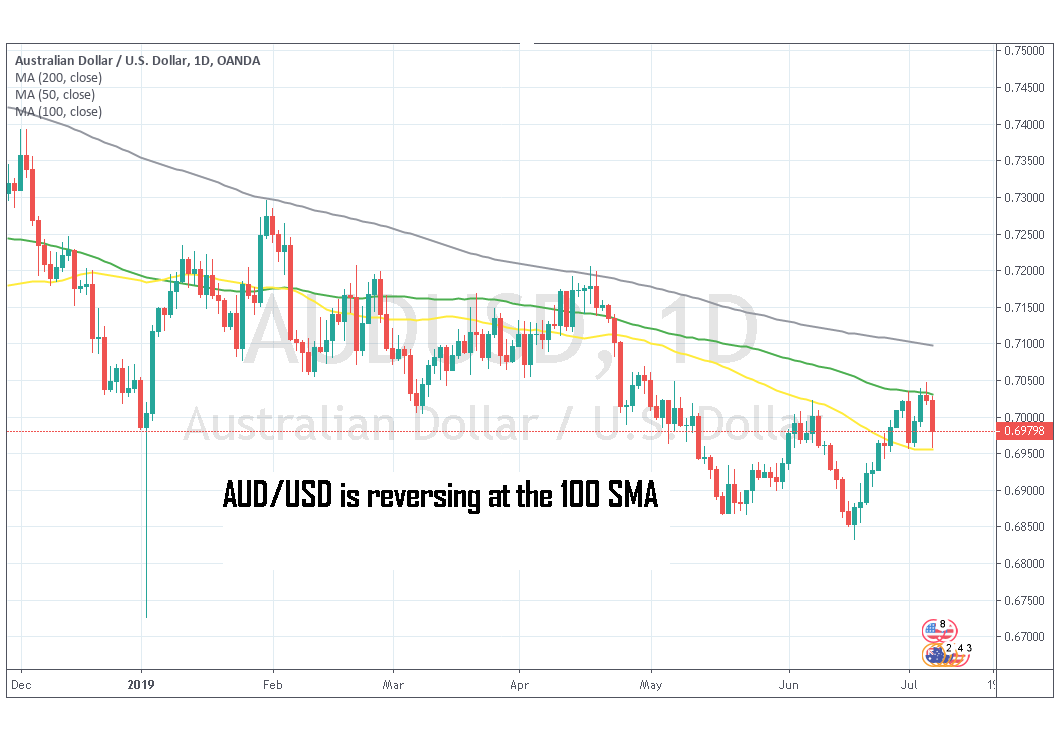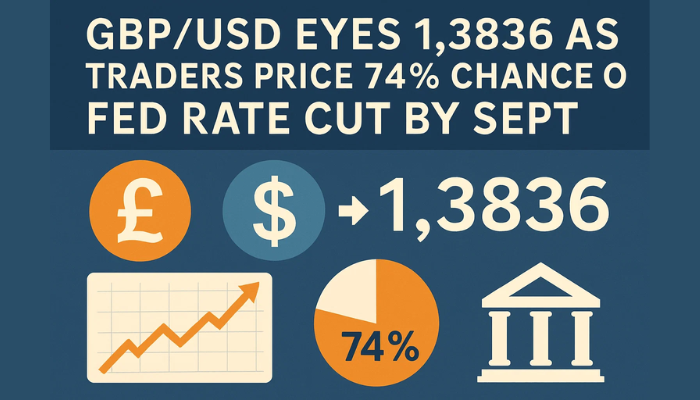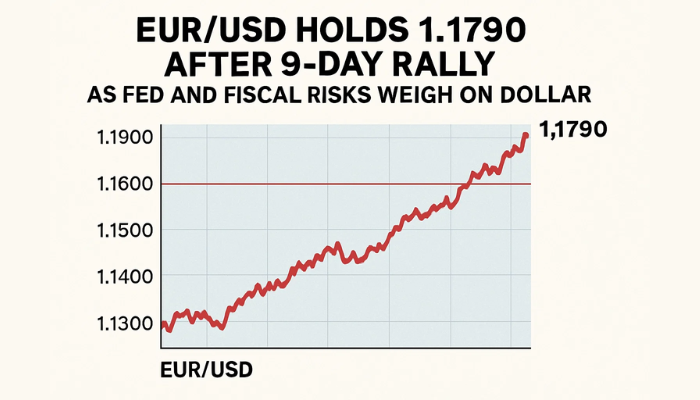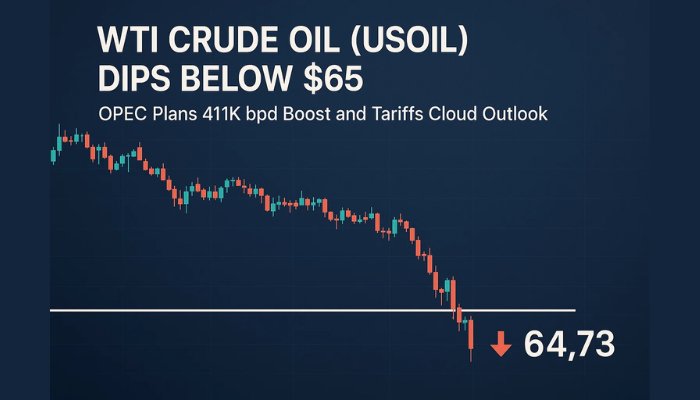Are the Jolly Times Over for AUD/USD and Commodity Dollars in General?
AUD/USD has been bullish in recent weeks but the universe is turning against it right now

Commodity Dollars have been on a long term decline which started in the second quarter of last year as markets realized that the trade tariffs that Donald Trump placed on China weren’t going to go away anytime soon and the trade war was bound to escalate, after China retaliated back with tariffs on US goods. The downtrend continued throughout last year and it spilled into this year, particularly for AUD/USD which was hit on a number of fronts which are listed below:
- The trade war hurt the global economy and as a result, the Australian economy, which is not good for the Aussie, because central banks tend to turn bearish during such times. The Reserve Bank of Australia (RBA) cut interest rates twice in the last two meetings if you have noticed
- The sentiment deteriorates in financial markets when there are such crises, like trade wars, geopolitical tensions or a weakening global economy, such as now. Commodity Dollars including the AUD are risk assets and as such, they tend to rally when the sentiment is positive and tend to decline when the sentiment turns negative.
- The trade war hurt the Chinese economy which is now growing at the slowest pace in the last three decades. That hurts Australian exports to China, which is the main importer of Australian raw materials in particular and other goods and products. Some argue that the Chinese economy can’t grow at that pace forever and it was about time it slowed down now that China is not the poor country of 30-40 year ago. That is also true, but that still doesn’t make things better for the Aussie, in fact, it is a long term negative factor.
- Besides the tensions between US and China, another front has opened between Australia and China. That is mainly political since it came as a result of China increasing its influence on that part of the world, but it affects the economy as well. China closed one of its main ports to coal imports from Australia about two months ago, which hurt coal and gas prices, thus the Australian Dollar.
For all the above reasons, the Australian Dollar and the other commodity Dollars have been declining for more than a year. The US dollar, on the other hand, has been on a bullish trend during this time as the US economy was the only one to grow at a decent pace, while the rest of the globe was slowing down considerably. The downtrend in AUD/USD picked up pace in April and May after the trade war escalated again and the RBA turned even more dovish.
But in the second half of June, we saw a bullish reversal which turned out to be a decent pullback. The US economy also weakened considerably in recent months as the economic data from the US has shown which turned the FED pretty dovish in the last meeting, after which the odds of the FED cutting interest rates in July increased to nearly 100%. That hurt the sentiment for the USD and the Buck entered a downtrend in the second half of June which also continued into this week, as you can see from the chart above. But now the pullback higher in AUD/USD has run its course and a reversal is about to take place. We saw a reversal yesterday, but that big reversal everyone is waiting won’t be official until the 50 SMA is broken on the daily chart. Although, I think that the big reversal will happen, so let’s have a look at the options.
Technical
- The Pullback Higher Is Complete – The bullish retrace is now complete for AUD/USD. In fact, the retrace is overstretched, which the stochastic indicator overbought on the daily time-frame. We have seen this scenario many times before as the chart shows and the price has reversed back down after those retraces. This one is no different.
- The Main Trend Is Bearish – As we mentioned above, this pair has been on a bearish trend and it has been breaking support after support level. The lows keep getting lower and the highs keep getting higher, so the trend is in full swing and there is no reason now for this pair to make a 180% reversal.
- Moving Averages Are Providing Resistance – During the one-year decline, AUD/USD has been finding solid resistance at moving averages. The chart above only shows the 200 SMA (grey) provide resistance during pullbacks for this pair but if you scroll back, you will find that the other MAs have also been providing resistance and pushing the price and the trend down. This time the 100 SMA (green) provided resistance twice.
- The Hammer Candlestick – The candlestick from Thursday closed as an upside-down hammer which is a strong reversing sign. The following candlestick closed pretty bearish yesterday which completes the bearish reversing pattern.

Fundamental
- Ongoing trade War – The Trade war between US and China has escalated again in the last few months. Although we heard some positive comments from Chinese and US officials at the G20 summit, we have no guarantee that they will come to a conclusion and end the trade war. They say that 90% of the deal is complete, but just like the Brexit deal where parties agreed on 95% of the issues, it’s the 5% or 10% which really matters since that’s where the parties fall apart. So, it’s not over until is over.
- Global Economy Continues to Slow – The global economy slowed down considerably during last year, but we saw a pause in Q1 of this year. Although, that pause is over now and the slowdown has resumed again. Actually, it has picked further pace now and there seems to be no end to it. So, expect things to get worse before getting better.
- The Sentiment Remains Negative – The sentiment in financial markets remains negative, hence the recent surge in safe havens such as Gold, the CHF and the JPY. This will keep risk assets such as commodity Dollars on the back foot for quite some time to come.
- The FED Rate Cut Is Not So Certain Now – It’s true that the odds of the FED cutting interest rates in this month’s meeting, but now those odds are slipping down. The US economy is not heading into stagnation like the rest of major economies around the globe as the recent data has shown a slight improvement this month. Yesterday’s employment report was quite positive with new jobs in the non-farm sector increasing by 224k, which removes one of the main negative factors for the FED.
So, all the points above point to a bearish reversal for AUD/USD and a continuation of the larger downtrend. The technical analysis looks quite bearish for this pair and so do the fundamentals. The US Dollar did decline during the last few weeks, but that decline is over now, especially after yesterday’s employment report from the US. The verdict goes to the sellers, but only after the 50 SMA has been broken.
- Check out our free forex signals
- Follow the top economic events on FX Leaders economic calendar
- Trade better, discover more Forex Trading Strategies
- Open a FREE Trading Account


